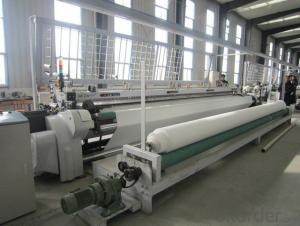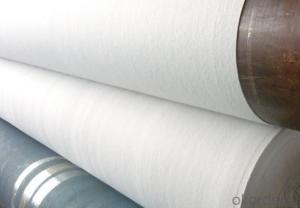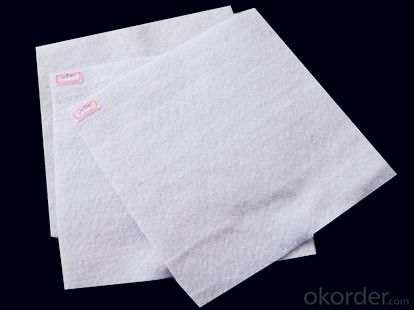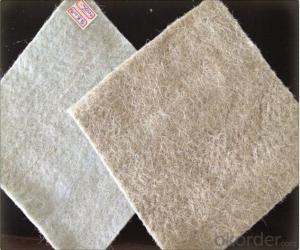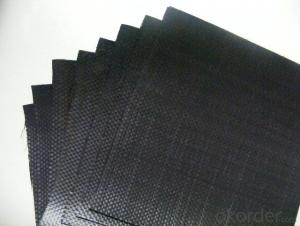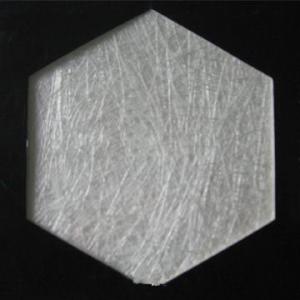Tarif Composite Nonwoven Geotextile for Road Construction
- Loading Port:
- Qingdao
- Payment Terms:
- TT OR LC
- Min Order Qty:
- 10000 m²
- Supply Capability:
- 500000 m²/month
OKorder Service Pledge
OKorder Financial Service
You Might Also Like
Composite Nonwoven Geotextile Images

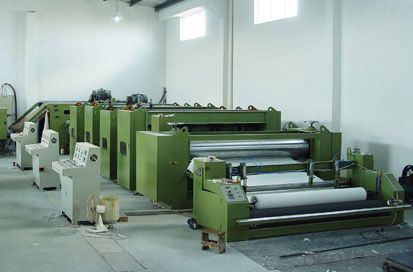


Composite Nonwoven Geotextile Specification:
| Properties | Unit | PET100 | PET150 | PET200 | PET250 | PET300 | PET350 | PET400 | PET450 | PET500 | PET600 | PET800 | |
| Mechanical Properties | |||||||||||||
| Tensile Strength | MD | KN/m | 2.5 | 4.5 | 6.5 | 8.0 | 9.5 | 11.0 | 12.5 | 14.0 | 16.0 | 19.0 | 25.0 |
| TD | KN/m | 2.5 | 4.5 | 6.5 | 8.0 | 9.5 | 11.0 | 12.5 | 14.0 | 16.0 | 19.0 | 25.0 | |
| Tear Strength | MD | KN≥ | 0.08 | 0.12 | 0.16 | 0.20 | 0.24 | 0.28 | 0.33 | 0.38 | 0.42 | 0.46 | 0.60 |
| TD | KN≥ | 0.08 | 0.12 | 0.16 | 0.20 | 0.24 | 0.28 | 0.33 | 0.38 | 0.42 | 0.46 | 0.60 | |
| CBR Plunger Strength | KN≥ | 0.3 | 0.6 | 0.9 | 1.2 | 1.5 | 1.8 | 2.1 | 2.4 | 2.7 | 3.2 | 4.0 | |
| Elongation at Yield | MD | % | 25~100 | ||||||||||
| TD | % | 25~100 | |||||||||||
| Hole Size | O90(O95) | mm | 0.07~0.2 | ||||||||||
| Vertical Permeability | cm/s | k*(10-1~10-3),k=1.0~9.9 | |||||||||||
| Identification Properties | |||||||||||||
| Material | / | Polyester | |||||||||||
| Color | / | White | |||||||||||
| Thickness | mm, ≥ | 0.9 | 1.3 | 1.7 | 2.1 | 2.4 | 2.7 | 3.0 | 3.3 | 3.6 | 4.1 | 5.0 | |
| Weight unit area | g/m² | 100 | 150 | 200 | 250 | 300 | 350 | 400 | 450 | 500 | 600 | 800 | |
| Forms of Supply | |||||||||||||
| Roll width | m | 1~6 | |||||||||||
| Roll length | m | 100 | |||||||||||
FAQ
We have organized several common questions for our clients,may help you sincerely:
Q1: How about your company?
A1:Our company are one of the largest geosynthetic products supplier in the world.We have the products experience more than 20 years.Already export to USA/Germeny/Australia/Zambia/Brazil etc.more than 20 countries.Almost 10years.Our products including Geocell/Fiberglass Geogrid/Geomembrane/Geotextile/Geonet etc.
Q2:Can you send samples to us ?
A2:Yes , free samples could be provided , but customer need pay for the freight cost .
After order placed , the freight charge could be refund .
Q3:What’s your Payment term ?
A3:T/T , L/C , Western Union,Paypal ...
Q4:What’s your manufacture process time ?
A4:Usually within 20 days
- Q: What are the considerations for geotextile selection in mining operations?
- When selecting geotextiles for mining operations, several key considerations should be taken into account. These include the specific requirements of the mining site, such as the type of minerals being mined and the environmental conditions present. The geotextile's strength and durability are crucial factors, as it needs to withstand the heavy loads and harsh conditions associated with mining activities. Additionally, the geotextile's filtration properties and permeability should be assessed, as they play a vital role in controlling water flow and preventing soil erosion. Compatibility with other materials and the cost-effectiveness of the geotextile should also be considered during the selection process. Overall, choosing the right geotextile for mining operations requires a comprehensive evaluation of the site's unique characteristics and performance requirements.
- Q: Polyester non-woven and geotextile is not the same, what is the difference?
- Polyester is only a raw material, that is, the fiber state of ethylene terephthalate, strictly can not be called a non-woven fabric, because it can not represent the non-woven processing technology. There are two geotextiles, one is the acupuncture processing technology to produce geotextile, there is a polymer directly into the network production of geomembrane! But you can use polyester as a raw material of non-woven fabric you can call it polyester non-woven. I hope you understand, do not understand can continue to explain to you!
- Q: Can geotextiles be used for erosion control in golf courses?
- Yes, geotextiles can be used for erosion control in golf courses. Geotextiles are permeable fabrics that can be installed to stabilize soil and prevent erosion by retaining sediment and preventing it from washing away. They can be used in various applications such as stabilizing slopes, reinforcing embankments, and controlling sediment runoff, which makes them an effective solution for erosion control in golf courses.
- Q: Can geotextiles be recycled?
- Yes, geotextiles can be recycled. Geotextiles are typically made from synthetic materials such as polyester or polypropylene, which can be recycled and used to produce new products. Recycling geotextiles helps to reduce waste and conserve resources.
- Q: How do geotextiles help in vegetation establishment?
- Geotextiles help in vegetation establishment by providing a stable and favorable environment for plant growth. They help to retain moisture in the soil, prevent erosion, and control weed growth. Additionally, geotextiles also protect the roots of plants from external damage and provide thermal insulation.
- Q: What are the advantages of using geotextiles in wetland restoration projects?
- There are several advantages of using geotextiles in wetland restoration projects. Firstly, geotextiles provide effective erosion control by stabilizing the soil and preventing it from washing away during heavy rainfall or flooding. This helps in maintaining the wetland's structure and preventing further degradation. Secondly, geotextiles act as a barrier, preventing the migration of harmful substances such as pollutants or excess nutrients from adjacent areas into the wetland, thus protecting its ecological integrity. Additionally, geotextiles can enhance vegetation growth by retaining moisture in the soil, promoting root development, and preventing weed growth. This ultimately contributes to the overall success of wetland restoration efforts.
- Q: How do geotextiles help with erosion control in coastal dunes?
- Geotextiles help with erosion control in coastal dunes by providing a protective barrier against wind and water erosion. They are placed on the dune surface to stabilize the sand, preventing it from being washed away or blown by strong coastal winds. The geotextiles allow water to pass through while retaining the sand, thereby reducing erosion and maintaining the integrity of the dune system.
- Q: What are the applications of geotextiles in landscaping?
- Geotextiles have various applications in landscaping, including erosion control, soil stabilization, and weed suppression. They can be used to prevent soil erosion on slopes, retain soil in embankments, and enhance the stability of retaining walls. Geotextiles also act as a barrier to prevent weed growth, reducing the need for herbicides. Additionally, these textiles can be employed in drainage systems to improve water filtration and prevent soil compaction. Overall, geotextiles provide valuable solutions for improving the sustainability and longevity of landscaping projects.
- Q: GB / T geotextile sampling sampling frequency, 100 volumes equal to the number of square meters?
- Geotextile wide conventional is 6 meters, there are also more narrow and narrow, the length of conventional 50 meters or 100 meters, if the conventional calculation of a roll is 300 square meters or 600 square meters, 100 volumes will be multiplied by 100 on the line The
- Q: How are geotextiles used in landfill construction?
- Geotextiles are used in landfill construction as a protective barrier between the waste material and the underlying soil. They help to prevent the contamination of soil and groundwater by acting as a filter, allowing for the drainage of liquids while retaining the solid waste. Geotextiles also reinforce the stability and integrity of the landfill by providing additional strength and preventing erosion.
Send your message to us
Tarif Composite Nonwoven Geotextile for Road Construction
- Loading Port:
- Qingdao
- Payment Terms:
- TT OR LC
- Min Order Qty:
- 10000 m²
- Supply Capability:
- 500000 m²/month
OKorder Service Pledge
OKorder Financial Service
Similar products
Hot products
Hot Searches
Related keywords
